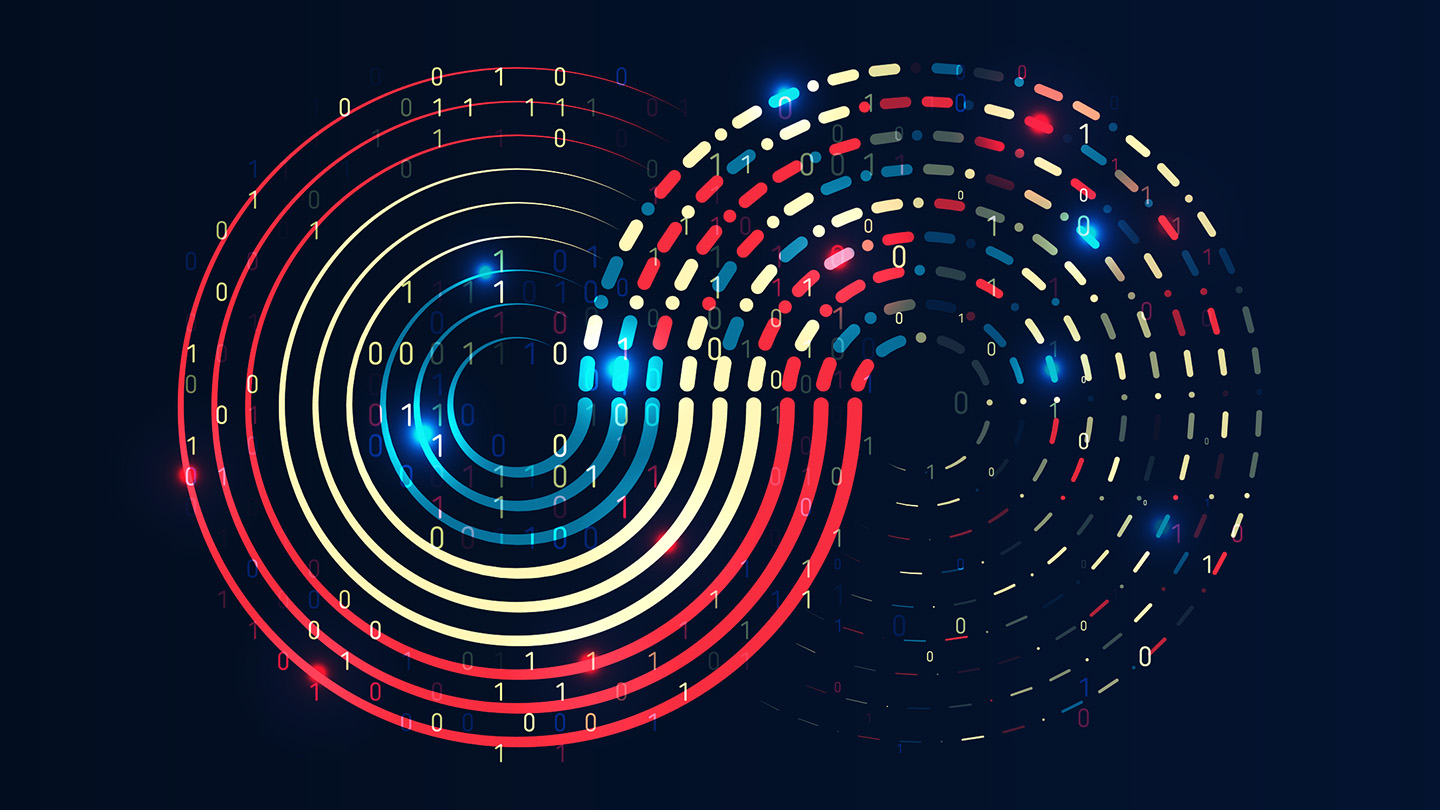May 14, 2024
How digital twins make the circular economy go round
The European Green Deal aims to establish the first climate-neutral continent by 2050. A core element of the plan involves transforming Europe into a circular economy. This means employing a systematic approach that reduces waste while also conserving and reusing resources and raw materials. The envisioned circularity relies heavily on digital technologies such as digital twins. Digital twins enable transparency and efficiency and accelerate the transformation to a circular economy.

The circular economy in industry
The circular economy has evolved from the linear economy and its principle of “take, make, and waste”. In the circular model, when businesses acquire and use resources to manufacture products, they don't simply dispose of them after initial use, but rather return the resources to the value chain. These secondary materials can then continue to help generate value. This allows industrial enterprises to reduce expenditure on materials and create new sources of income by reusing, repairing, or recycling products and materials. The circular economy holds great economic potential for Germany according to a study from Deloitte and the Federation of German Industries (BDI) titled “Zirkuläre Wirtschaft: Herausforderungen und Chancen für den Industriestandort Deutschland” (The Circular Economy: Challenges and Opportunities for Germany as a Manufacturing Hub) in May 2021:
- The substitutability of important raw materials such as aluminum and steel and the transition to domestic secondary raw materials could boost the annual economic output of German industry by around €12 billion as well as add 180,000 new jobs.
- The circular economy promotes new business models and drives innovation mainly in three areas: reducing the amount of material used to produce goods, maximizing the amount of use obtained from materials (longevity), and recycling.
Like any transformation, moving to a circular economy also presents challenges to businesses, particularly with regard to changes in production activities. The opportunities here lie in digitalization — and this is where the digital twin comes into play.
Digital twins as part of the twin transition
The twin transition, which describes a simultaneous digital and economic transition, is driving the implementation of the circular economy. Digital technologies provide the data and methods enterprises need to optimize processes, use resources more efficiently, and reduce the negative environmental impacts of their business activities. Digital twins — virtual representations of physical objects or systems — play a crucial role here.
They can help with incorporating the entire lifecycle of a product, planning effectively from product design all the way to end-of-life, and returning the components to the value chain. Digital twins, whether they are product or production twins, are essential for the implementation of a circular economy, mainly in regard to these six factors:
- Optimizing product designs: With digital twins, companies can simulate products and processes virtually and eliminate the need to construct a physical prototype. This allows them to explore product design scenarios, apply AI copilots, and develop and expand a knowledge base of raw materials used, which is essential for end-of-life reuse.
- Managing resources efficiently: Digital twins can provide precise data on the status and use of resources and materials. This information is critical for planning efficient recycling processes and enabling the reuse of components and materials. It thus supports the underlying principle of the circular economy, which dictates that materials be kept in the value chain as long as possible.
- Saving energy: Optimized processes in operations, lower material use, and improved machine utilization all contribute to saving energy. Digital twins measure energy consumption with great precision and can accurately attribute it to the equipment or systems that consumed the energy. Detailed insights into energy flows in a factory become possible. This helps manufacturers smooth out energy consumption peaks while reducing total energy consumption.
- Making forecasts and performing maintenance: By continually monitoring machines and processes, digital twins can predict when maintenance or repairs are necessary for machines and equipment. This helps to reduce downtime and extend the useful life of the equipment. And in a circular economy, it helps to reduce waste.
- Establishing transparency, access to information, and traceability: Digital twins offer complete transparency across the entire lifecycle of a product. This transparency makes it possible to trace exactly where and how resources are being used. It also ensures that they can be effectively recycled or reused at end-of-life. This is especially important since many companies will soon be legally required to comply with documentation obligations such as the battery passport.
- Supporting innovation and development of business models: Digital twins can support innovative business models such as Products as a Service. Business models like these focus on product use instead of ownership. They require accurate data in order to manage things like maintenance, returns, and recycling.
As a result of these advantages along many stages of the product lifecycle, digital twins play a crucial role in implementing and scaling the circular economy. Companies can not only act in a more environmentally friendly manner, but also become more efficient and competitive with digital twins. A real-life example shows how digital twins interact with other technologies and enable greater efficiency.
Use case: meeting the challenge of battery recycling
The global battery market is growing rapidly: Global demand for lithium-ion and sodium ion batteries will be 18.55 times as high in 2030 as it was in 2020 according to the study “Battery Monitor 2023” by the consultancy Roland Berger and RWTH Aachen University. Batteries are essential for the future of electric mobility. Until now, however, their ecological footprint has been problematic with respect to raw materials returning to the circular loop because not all materials are being recycled at end-of-life. The European Parliament therefore decided that starting in February 2027, all new LV batteries, industrial batteries, and batteries for electric vehicles with a capacity greater than 2 kWh will require a digital battery passport. This digital product pass will document the entire lifecycle of the battery including raw materials, use, and reuse.
One of the challenges for battery makers is disassembling the batteries at end-of-life so they can recycle them and return the materials to the resource loop. We participated in the ZIRKEL research project which examined how automation solutions can contribute to disassembling these batteries at scale as part of an interdisciplinary consortium of industrial and research entities that includes Volkswagen AG, Liebherr-Verzahntechnik, and Deckel Maho Pfronten. Our digital twins played an essential role in the project. They enabled in-depth analysis, definition, and modeling of data interfaces for the machines and AI platforms connected to them.
The contextualized data gained in this manner can then be used for AI analyses or in a blockchain to ensure the traceability of recycled components for the EU battery passport. During the disassembly and recycling processes, digital twins can adapt to different battery types and battery conditions, making it possible to complete material loops. They increase the efficiency of processes while enhancing flexibility and reducing costs. Digital twins thus support the sustainable circular economy in the field of electric mobility.
Conclusion
Implementing digital twins in the circular economy holds enormous potential for making industrial processes more efficient and sustainable. In combination with the European Green Deal, the technology promotes environmental conservation and makes a contribution towards economic resiliency, particularly in growth markets. For a successful transformation, it is therefore important for companies to recognize and capitalize on the opportunities that digital twins represent for implementing a holistic circular economy.
Read more about the ZIRKEL research project.
Find out more about Digital Twins and Ascon Qube.


